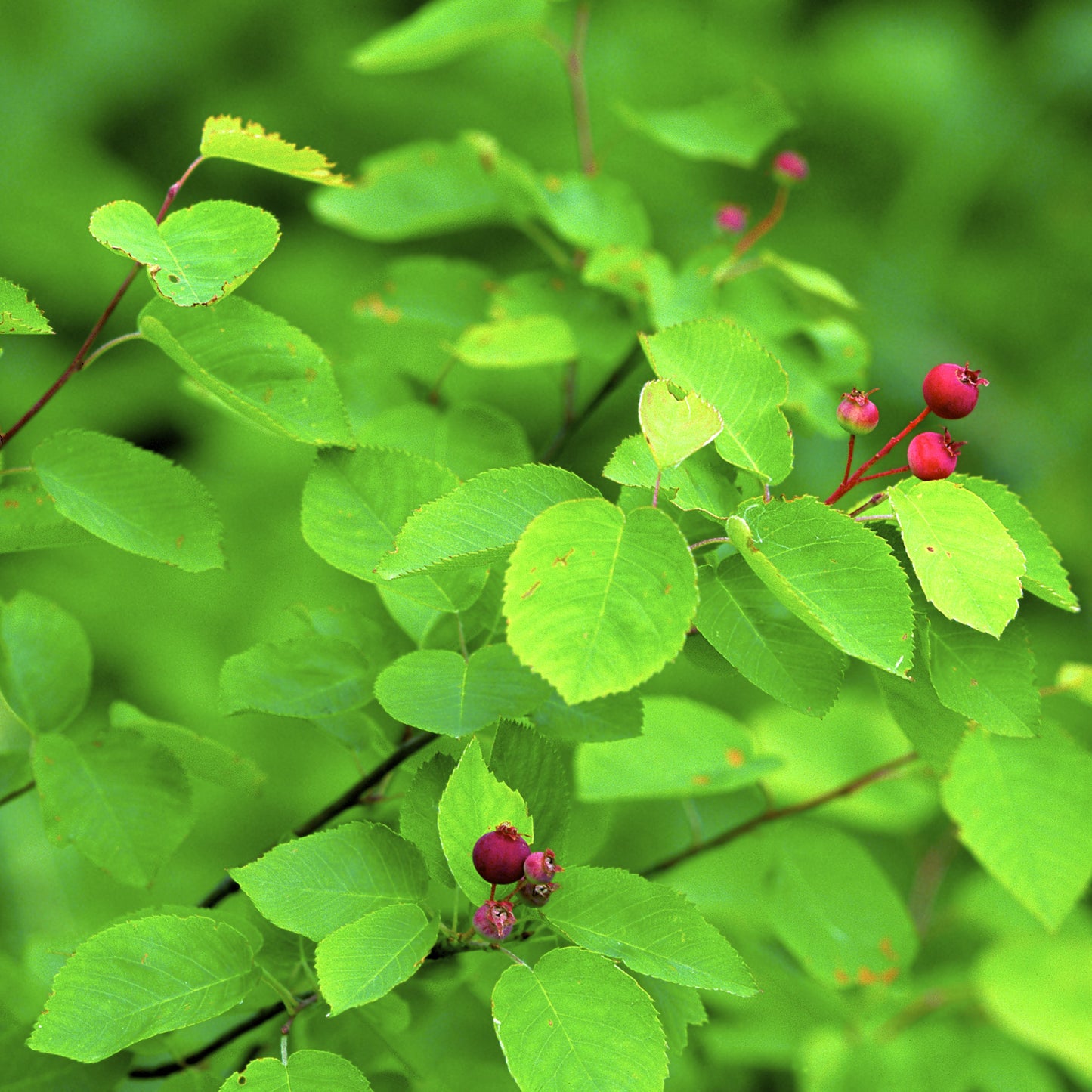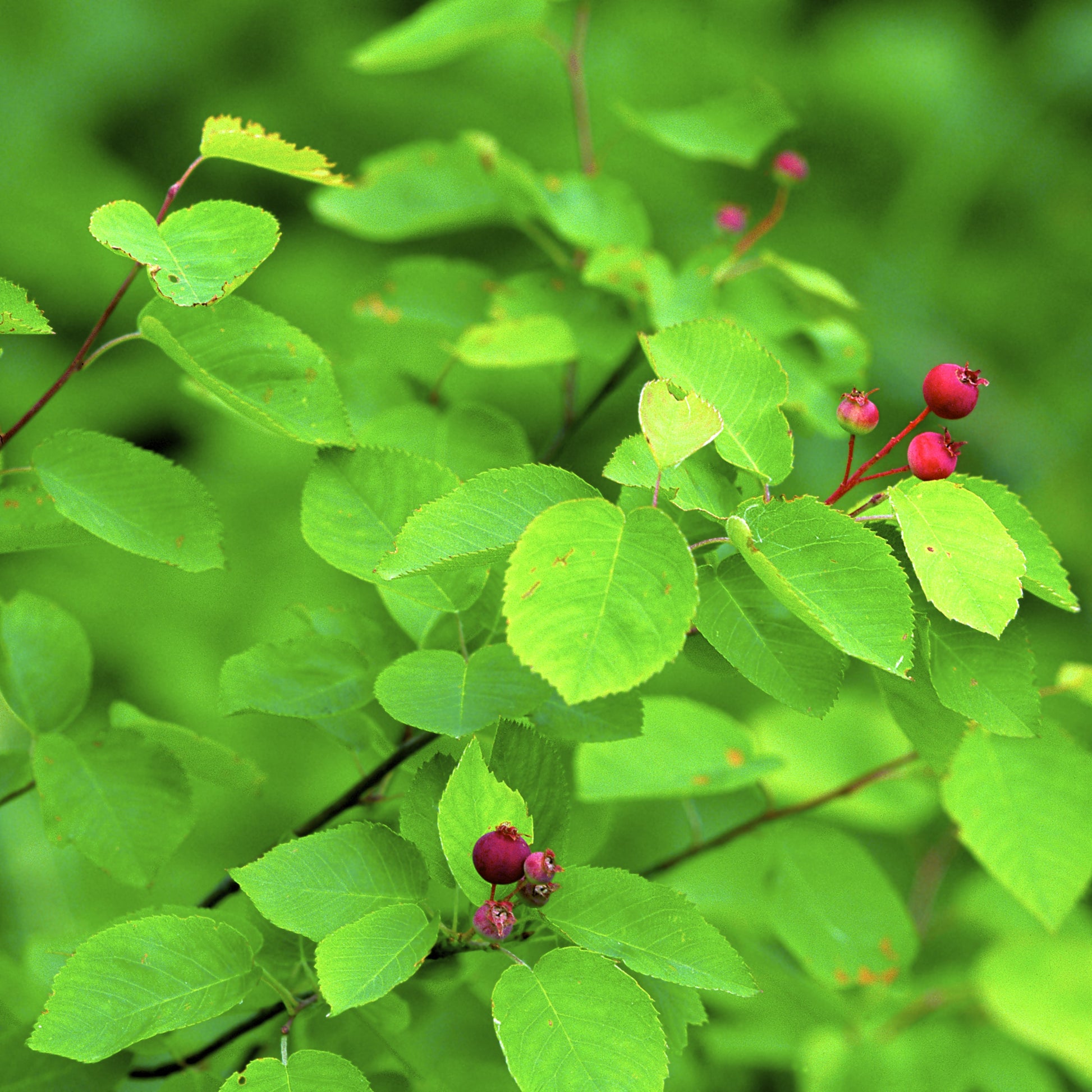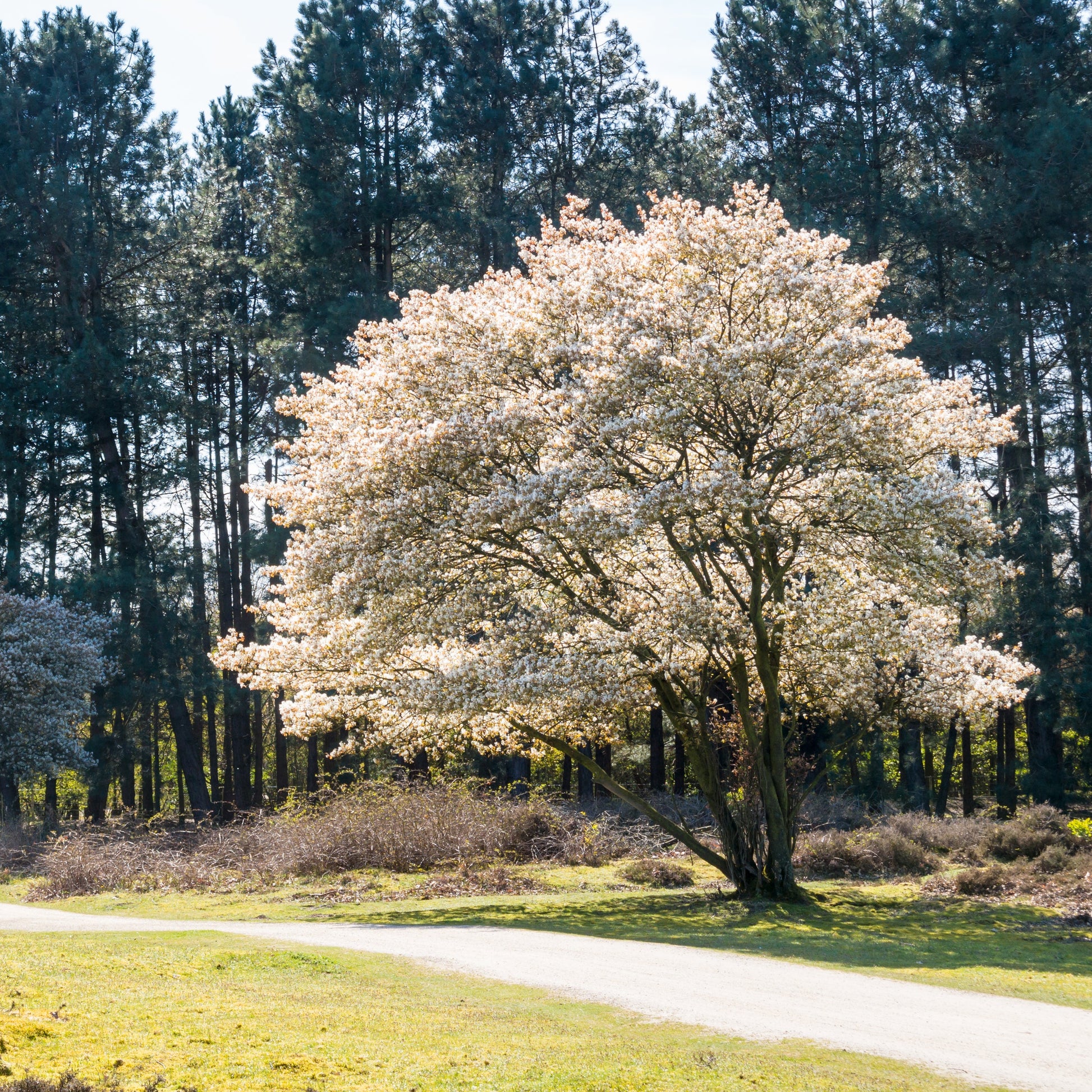Limited Quantities - Reserve Now For Fall
Allegheny Serviceberry Tree
Allegheny Serviceberry Tree
Couldn't load pickup availability
Amelanchier laevis
A versatile, multi-season tree that brings year-round beauty to any landscape. With its stunning spring blossoms, edible berries, and vibrant fall foliage, this small ornamental tree is an excellent choice for home gardens, wildlife habitats, and urban settings.
Below is a comprehensive table outlining its characteristics, environmental benefits, and care requirements.
Allegheny Serviceberry Tree
| Attribute | Details |
|---|---|
| Botanical Name | Amelanchier laevis |
| Common Names | Allegheny Serviceberry, Smooth Serviceberry |
| Mature Height | 15-25 feet |
| Mature Width | 15-20 feet |
| Growth Rate | Medium (1-2 feet per year) |
| Lifespan | 50+ years |
| USDA Hardiness Zones | 4-8 |
| Sun Preference | Full sun to partial shade |
| Soil Type | Well-drained, loamy, sandy, or clay soils |
| Soil pH | Slightly acidic to neutral (5.5-7.0) |
| Water Needs | Moderate; prefers moist, well-drained soil but tolerates short droughts once established |
| Flowering Season | Early to mid-spring |
| Flower Color | White |
| Fruit | Small, edible dark purple berries (Juneberries) |
| Fall Foliage | Vibrant orange, red, and yellow tones |
| Wildlife Attraction | Birds, bees, and butterflies |
| Landscape Uses | Ornamental tree, privacy screening, wildlife garden, pollinator-friendly planting, naturalized areas |
| Maintenance Level | Low |
Key Features & Benefits
✅ Multi-Season Interest – Fragrant white blossoms in spring, delicious berries in summer, fiery foliage in fall, and smooth gray bark for winter appeal.
✅ Wildlife Magnet – The berries are a favorite for birds, and the flowers support pollinators.
✅ Edible Berries – Juneberries taste similar to blueberries and can be used in jams, pies, and smoothies.
✅ Tolerant & Hardy – Can adapt to various soil conditions and is resistant to most pests and diseases.
✅ Compact Size – Ideal for small yards, under power lines, or near patios.
Pros & Cons
| Pros | Cons |
|---|---|
| Provides year-round beauty | Can be susceptible to rust and mildew in humid conditions |
| Produces edible, antioxidant-rich fruit | Berries may attract birds, which could create some mess |
| Low maintenance once established | Prefers consistent moisture, may not thrive in prolonged droughts |
| Grows well in urban and suburban settings | May need occasional pruning to maintain shape |
| Great for wildlife gardens | Not as fast-growing as some other ornamental trees |
Planting & Care Guide
- Spacing: 12-20 feet apart for proper air circulation
- Mulching: Apply a 2-3 inch layer of mulch to retain moisture and suppress weeds
- Pruning: Best done in late winter or early spring to maintain shape and remove dead branches
- Fertilization: Apply balanced fertilizer in early spring for optimal growth
The Allegheny Serviceberry is a fantastic choice for gardeners looking for a low-maintenance, visually appealing, and wildlife-friendly tree that thrives in various conditions. Whether planted as a specimen tree or in groups for naturalized landscapes, this tree brings beauty, function, and ecological benefits to any outdoor space!
Share




